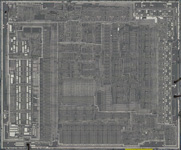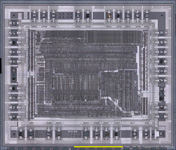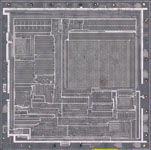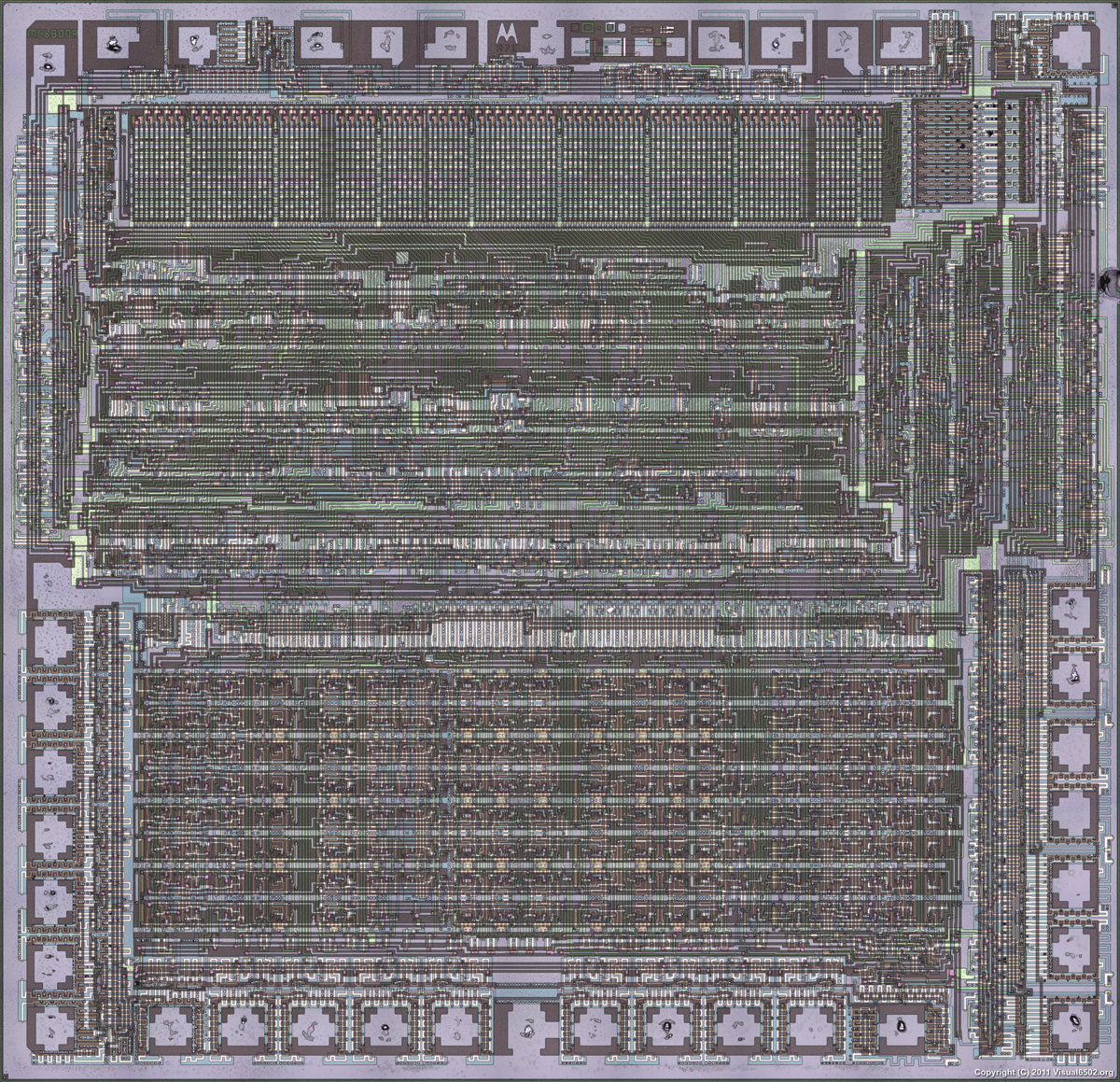Happy New Year Everyone!
I'm happy to report that Visual6502.org has now had over a quarter of a million unique visitors! The site has served just over 2 TB of die shot imagery and simulation data in its 15 months on the web. We've been quiet lately, but behind the scenes there's an ever-growing buzz of activity thanks to several new folks studying chips and contributing polygons. Their work is trickling out on our wiki, various other websites (which we really need to summarize and link to. Check the wiki!), and in some retro computing forums. In the New Year, we have a few fun appearances in the media lined up, and we hope to tell you a bit more about our part in two very exciting collaborations.
We expect to have new decaps and die shots in a month or so (our lab wizard is focused on his first kid, born just after Thanksgiving!), and we'll be gradually working our way through the inventory of over 200 chips sent in by donors. Thank you donors! We've decapped over 100 of these so far, though the die shots and de-layering (a very delicate process) will take quite a while longer to complete.
It's looking to be a great year!
Thursday, December 29, 2011
Sunday, August 7, 2011
Shots of a famous speech synthesis chip. See the die shot page for links to a programming guide and chip data sheets
Thursday, July 28, 2011
Biggest: 80286, Smallest: UC3843P
Our largest die shot to date: 23253 x 22924 pixels, 848 MB, stitched from 455 separate 1600x1200 images. The Intel 80286
And our smallest chip, a Texas Instruments UC3843P
And our smallest chip, a Texas Instruments UC3843P
And finally, an AMD 2901 4-bit ALU
Monday, July 18, 2011
Texas Instruments TMS1000NLL Die Shots
June and July have been very busy for us, but not busy at the acid bench or microscope. Now we're back in the lab and getting down to business, knocking a few chips off the top of the amazing pile of historic devices we've received from donors lately. Here's a very early microcontroller from TI.
Keep an eye on our Chip Status List.
Keep an eye on our Chip Status List.
Saturday, July 16, 2011
Friday, May 27, 2011
Wednesday, May 25, 2011
Monday, May 16, 2011
Sunday, April 17, 2011
6800 Visual Simulation
Thanks to Jorge Cwik who's joined our preservation and modeling effort, we've got a complete set of polygons for our Motorola 68A00P, made in 1986. Jorge worked in a standard vector drawing app, Corel Draw, and has written scripts to help with the work. He's provided data in SVG as well as extracted a netlist for the chip. After converting to our visual sim format, many folks on the Visual6502 team helped debug the netlist and bring the chip up in simulation. Our wiki entry for the chip links to the simulation and other 6800 material. Enjoy!
http://visual6502.org/wiki/index.php?title=Motorola_6800
Even better - Jorge is eager to get started on other chips, and in fact, he started modeling a famous Atari chip before discovering our project. Way to go, Jorge!
http://visual6502.org/wiki/index.php?title=Motorola_6800
Even better - Jorge is eager to get started on other chips, and in fact, he started modeling a famous Atari chip before discovering our project. Way to go, Jorge!
Tuesday, April 5, 2011
Motorola 6800 delayered
We've posted a step-by-step description about what we do to look at all of a chip's parts: Motorola_6800_die_shots.html
This features five high resolution die shots of a Motorola 6800 chip as we remove layers of material one by one. Each of the die shots is aligned, so by loading them into a paint program on different layers, you can flip between them to get an idea for what's what.
We have a similar breakdown for a custom Apple Lisa chip, a 341-0064A, which is actually a National Semiconductor COP421 customized for Apple. A gate-level model of this rare chip will be a great asset for computer history.
This features five high resolution die shots of a Motorola 6800 chip as we remove layers of material one by one. Each of the die shots is aligned, so by loading them into a paint program on different layers, you can flip between them to get an idea for what's what.
We have a similar breakdown for a custom Apple Lisa chip, a 341-0064A, which is actually a National Semiconductor COP421 customized for Apple. A gate-level model of this rare chip will be a great asset for computer history.
Thursday, February 3, 2011
But Wait... There's More!
We're very happy to have received several notable chips from donors and a bit of money to help process them. This has allowed us to tune and greatly improve the de-packaging chemistry and cleaning methods at a local lab, and we've just begun to post the results. The process and turnaround has become so good that we've now de-packaged 19 plastic-encased chips, most of these in just the last two weeks. This is in addition to about 10 ceramic sandwich or metal-capped chips that we've de-packaged with mechanical, not chemical, methods. Hopefully we'll find a bit of time to write about this on our site.
For now, allow us to present:
Our largest chip, the Motorola 68000: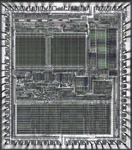
Our tiniest but most colorful chip, the Nintendo 3193A: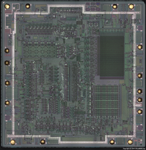
The three voices of the Commodore 8580 SID: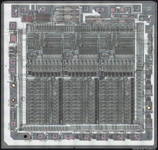
The loopy concentric transistors of the RCA 1802: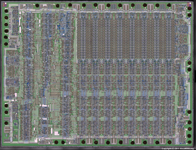
And finally, for Valentine's Day, the lovely pink MOS 6522: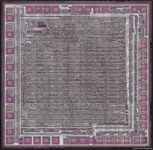
Now, to start de-layering and vectorizing!
For now, allow us to present:
Our largest chip, the Motorola 68000:

Our tiniest but most colorful chip, the Nintendo 3193A:

The three voices of the Commodore 8580 SID:

The loopy concentric transistors of the RCA 1802:

And finally, for Valentine's Day, the lovely pink MOS 6522:

Now, to start de-layering and vectorizing!
Subscribe to:
Comments (Atom)
